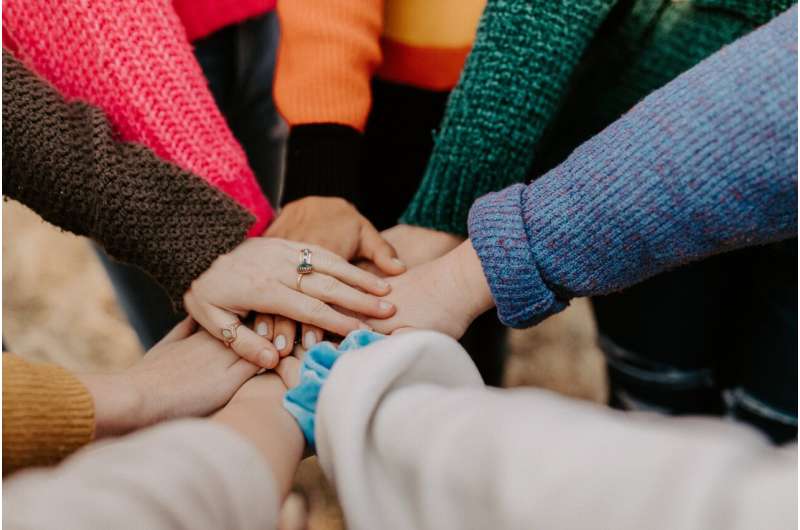
Credit: Unsplash/CC0 Public Domain
Friends of young people who self-harm or have suicidal thoughts may need extra support to prevent this from having a negative impact on their own mental well-being. This applies not only to young people who self-harm, but also to friends and acquaintances.
While much research rightly focuses on at-risk youth and their families, friendships are rarely included in research into self-harm, new research from experts at the University of Birmingham has found.
In an extensive literature review, the team aimed to bring together all research in this area to gain a better understanding of common themes surrounding friendship and self-harm in young people.
The study, published in The Lancet Psychiatry, explores the experiences and perspectives of young people who self-harm and of friends who need to support a young person who self-harms.
Self-harm is considered a major public health problem. Between 10 and 20% of young people between the ages of 11 and 25 engage in self-harm. This percentage has been steadily increasing in recent years.
During adolescence, peer relationships become increasingly important. The links between friendships and self-harm are known to be crucial, but the nature, direction and strength of these links are unclear. Our research shows that young people who self-harm need support and often confide in friends they trust and feel close to.
However, this can have a knock-on effect on the wellbeing of their friends. A specific recommendation from this review is that when young people disclose that their friend has self-harmed, the adults involved should also provide support to the young people who made the disclosure.
Lead author of the paper, Delfina Bilello, Ph.D., of the university’s School of Psychology and Institute for Mental Health, said: “Self-harm often begins during adolescence. Because this is often the time when young people begin to spend more time with their friends and are most likely to confide in their friends, it is really important that we try to understand this dynamic, and the potential impact – positive or negative – on both sides of the friendship.”
Key themes the researchers discovered included:
- Social transmission of self-harm, also known as ‘contagion’, is the process by which young people may be drawn to self-harm during the process of having and/or supporting a friend who self-harms.
- The importance of friendships as primary sources of support for young people who self-harm or have a tendency to self-harm
- Negative outcomes for friends who have lost a loved one through the suicide of a peer and friends who support a young person who self-harms, including symptoms of depression, anxiety, PTSD, and grief.
The review found that women and girls were most likely to be exposed to and affected by their friends’ self-harming behaviour, and were more likely to be supporters – and more likely to experience negative outcomes from this role. However, this could also be partly due to under-reporting of this behaviour by men and by gender minorities.
Although the study did not explicitly aim to evaluate interventions, a number of promising avenues were identified. These included school- and community-based universal interventions around peer support and relationships, as well as postventions and interventions specifically targeting survivors and peers.
Bilello added: “Our research provides a strong justification for further research to identify and develop tailored interventions for youth who support at-risk friends.”
More information:
A systematic review and narrative synthesis examining the relationship between friendships/peer relationships and self-harm beliefs and behaviors among youth, The Lancet Psychiatry (2024).
Quote: Friends of at-risk youth may need extra support for their mental well-being (2024, July 15) Retrieved July 15, 2024 from https://medicalxpress.com/news/2024-07-friends-youth-extra-mental.html
This document is subject to copyright. Except for fair dealing for private study or research, no part may be reproduced without written permission. The contents are supplied for information purposes only.
 Healthy Famz Healthy Family News essential tips for a healthy family. Explore practical advice to keep your family happy and healthy.
Healthy Famz Healthy Family News essential tips for a healthy family. Explore practical advice to keep your family happy and healthy.


